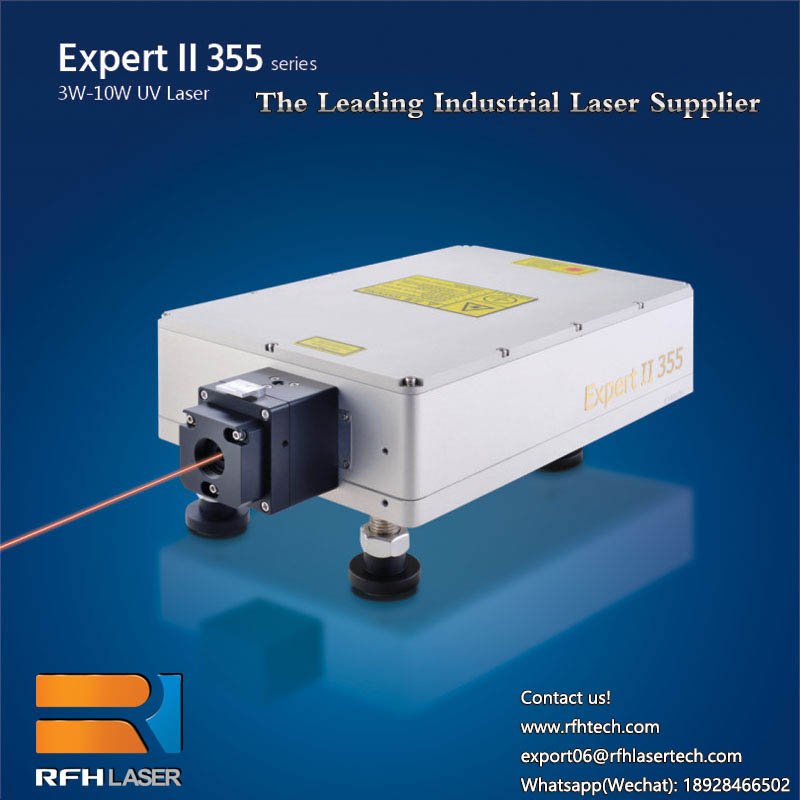Laser Markers / Laser Marking systems
May 02 , 2021Laser Markers / Laser Marking systems
This section introduces the different types of laser markers and the characteristics of each type.
Laser marker types vary according to the wavelength of the laser light, and the targets that can be marked also vary.
The finish feeling for each marking process will also vary, so the ideal model will vary depending on the application objective.

YVO4/Fibre Laser Marker
CO2 Laser Marker
Green Laser Marker
UV Laser Marker
Products
YVO4/Fibre Laser Marker
Wavelength: 1064 nm
The IR wavelength which is an abbreviation for Infrared Ray is the most versatile wavelength of light for laser processing.
As the name suggests, the infrared range begins where the red range ends, and being longer than 780 nm, the wavelengths of IR light are not visible to the human eye. (The infrared range encompasses the range of 700 nm to 1 mm wavelengths.)
Typical characteristics of 1064 nm wavelength range lasers
A wide range of processing applications from plastics to metals
Cannot process transparent objects like glass as the laser passes through such objects.
Creates contrast on plastics easily.
Typical characteristics of 1064 nm wavelength range lasers
Even at similar wavelengths, beam characteristics will vary depending on the oscillation method.
In general, the higher the peak power and the shorter the pulse duration, the stronger the instantaneous energy will be, ensuring reduced thermal damage the ability to prevent scorching.
Application
CO2 Laser Marker
Wavelength: 10600 nm
CO2 lasers have a wavelength that is 10 times longer than a YAG, YVO4 or Fibre laser. This is the longest wavelength among widely used industrial lasers.
As its name suggests, a CO2 laser is a gas laser made with carbon dioxide gas. Such lasers are used for processing machines and marking.
Typical characteristics of 10600 nm wavelength range lasers
Not absorbed well by metals
Melting and burning occur due to the long wavelength and transfer of heat.
Processing transparent objects such as glass and PET are possible.
Compared with the standard wavelength, processed plastics tend to be subjected to less colouration.
Application
Green Laser Marker
Wavelength: 532 nm
At one half the standard wavelength (1,064 nm), lasers at this wavelength are called SHG (Second Harmonic Generation) lasers.
Because a wavelength of 532 nm will be green in the visible light range, these lasers are also called green lasers. The standard wavelength produced from a YAG or YVO4 laser is altered by passing through an oxide single crystal (LBO: lithium borate).
Typical characteristics of 532 nm wavelength range lasers
With a high absorption rate for various materials, 532 nm lasers facilitate processing even with high-reflectance targets such as gold or copper.
The beam diameter is also narrower than a standard wavelength laser, making detailed processing possible.
Light at this wavelength will penetrate glass and other transparent targets, so processing of such targets is generally impossible.
This wavelength is not prone to causing heat stress to targets.
UV Laser Marker
Wavelength: 355 nm
At one third of the standard wavelength (1064 nm), UV lasers are called THG (Third Harmonic Generation) lasers. In addition, this wavelength falls under the ultraviolet range, hence the name “UV laser”. With a UV laser, a standard wavelength laser passes through a non-linear crystal to create a 532 nm wavelength. This converted wavelength is then passed through another crystal, resulting in a wavelength of 355 nm.
Thanks to a high absorption rate for various materials and no heat stress, lasers at this wavelength can be used for detailed processing applications requiring high quality.
Typical characteristics of 355 nm wavelength range lasers
The absorption rate is higher than a green laser, allowing for good colouration and damage-less marking for a wide variety of materials.
Marking and processing of high-reflectance targets such as gold and copper is possible with minimal thermal influence.
Beam diameters that are narrower than with a green laser are possible, allowing for detailed marking and processing.
Metal
Metal
Plastic
Plastic
The values are for reference only and do not account for surface reflectivity.